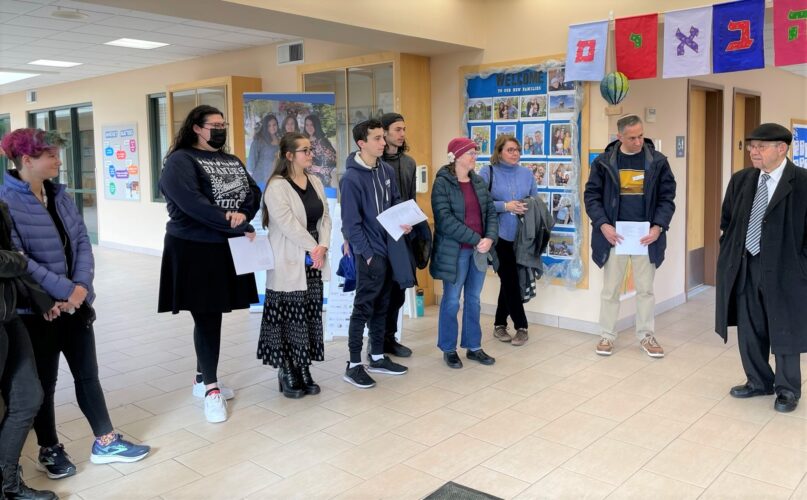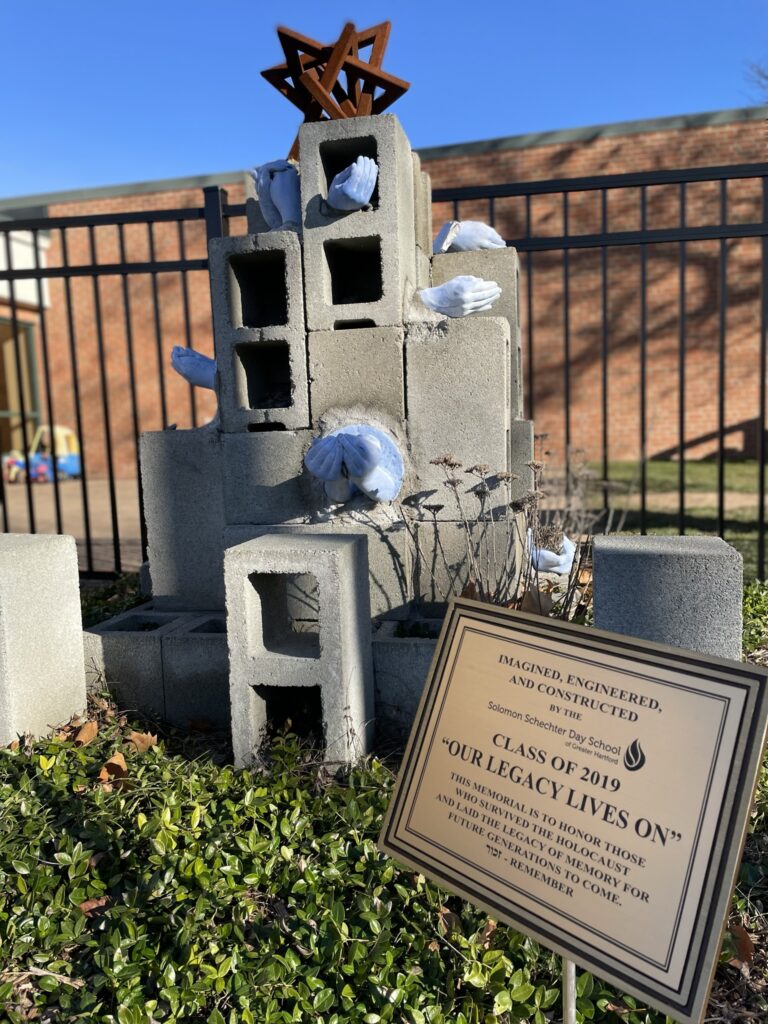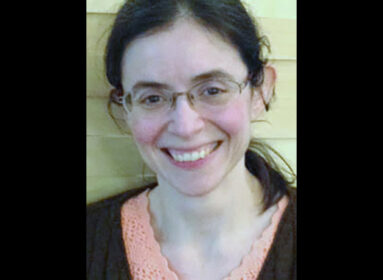
WEST HARTFORD, Conn.—On a blustery morning in late November, a group gathered at Solomon Schechter Day School of Greater Hartford to re-dedicate the school’s Holocaust Memorial. Members of Schechter’s class of 2019, who designed and built this special sculpture when they were in seventh grade, unveiled a new plaque.
Those in attendance, including parents and Schechter staff, also had the privilege of hearing a moving talk from Holocaust survivor Rabbi Phillip Lazowski, who was 11 when he fled during the Holocaust and eventually joined the resistance against the Nazis, addressed the now 12th-grade students who created the monument five years ago. He reminded them of the importance of hearing survivors’ stories, because “in five or six years, there will be no more living survivors of the Holocaust.” He urged all of the attendees to speak out against injustice, prejudice, and antisemitism. Representatives from Voices of Hope, a Connecticut organization that promotes education about the Holocaust and other genocides, also offered remarks.

In 2018, Schechter students collaborated with the organization Facing History and Ourselves to design and construct the large stone structure. Its core is a tower of cement blocks, which represent the hardship of the Holocaust: a rough and difficult material, something hard as stone. Blossoming from the blocks are open hands, shaped from a much smoother and softer-looking cement. These represent the new generations of Jews who survived and flourished after the Holocaust. Students made molds for the hands using their own hands as well as those of two grandparents who were Holocaust survivors. In some cases, a student molded his/her hand while clasped with their grandparent who survived the Holocaust. The six bricks around the memorial represent the six death camps as well as the six million Jews lost in the Holocaust.
In the spring and summer, a variety of flowers native to Israel and Europe bloom from the cracks in the cement and around the monument. Daffodils return each spring, symbolizing hope, rebirth, memory, awareness, reflection, and forgiveness. The contrast of the hopeful and joyous colorful flowers against the stark and somber stone structure captures the themes of death and new life.
Back in 2019, Alyssa Temkin, one of the Schechter students who took who took part in the project, noted, “The most impactful piece of this [sculpture] is where my Poppy and I have our hands clenched together. His courage and strength is forever intertwined with me. We represent the beauty that came after devastation. We will continue to grow, flourish and remember.”
Man Photo: Holocaust survivor Rabbi Phillip Lazowski, who was a young boy when he fled the Holocaust, addressed several of the now 12th-grade students who created the monument five years ago.








 Southern New England Jewish Ledger
Southern New England Jewish Ledger









